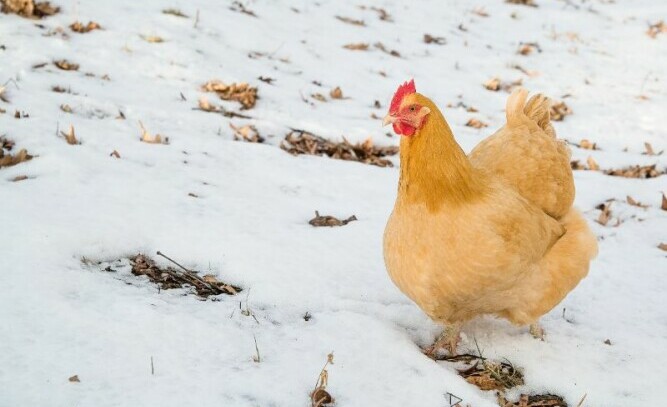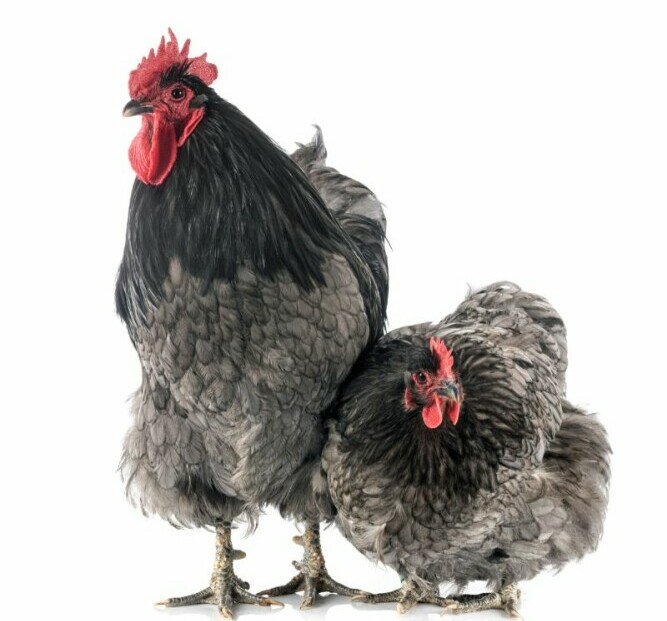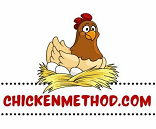
In this article, I’m going to be talking about the Orpington, a breed that is very popular for its impressive attributes. You can’t go wrong with this one if you’re considering what type of chicken to bring into your coop.
Imagine a versatile bird that fits almost any role you expect from your backyard flock. That’s what Orpingtons bring to the table: size, a striking presence, and a functional nature that serves well in a variety of settings.
This is a continuation of my APA-recognized chicken list and is number 39 on the list. You can find other articles fitting this criteria elsewhere in my blogs.
What you will find out about in this blog is their luxurious plumage that comes in an array of colors, typically the lush black, pristine white, majestic golden, and the ‘blue’ that’s actually a stunning silver-grey.
Each bird embodies a fullness and roundness that is characteristic and appealing to those who appreciate a robust breed.
I think these chickens aren’t just about looks; they’re about performance, too. Whether you’re just starting out with chickens or you’ve been at it for years, Orpingtons have qualities that extend from the novice backyard coop to the more extensive operations of seasoned keepers.
These birds have something you like—for their aesthetic, gentle demeanor, or practicality—and you’ll see that Orpingtons check most boxes.
You might wonder about where these alluring birds come from and what their history can tell us about their present-day characteristics. I’ll break that down for you in the next section as we dive into the fascinating origins of the Orpington breed.
The Origin of Orpington Chickens

I’m going to take you back in time to a little village in Kent, England. It’s here, in the late 1800s, where the story of the Orpington chicken begins. The breed was first developed by William Cook, a coachman who turned his passion for poultry into a legacy.
He aimed to design a chicken that showed well in the ring and was a good performer in egg and meat production.
His creation, named after his hometown of Orpington, was a success. Cook strategically crossbred Black Minorcas, Black Plymouth Rocks, and Langshans to develop a bird that was the best of both worlds: a prolific layer and an excellent table bird.
This isn’t just your ordinary breed; the Orpington’s appeal quickly spread internationally.
By selectively breeding for certain characteristics, Cook was able to offer several varieties, including the most recognized Buff Orpington, along with Black, White, and Blue types.
The breed sailed across oceans, finding early acceptance in South Africa and America. They were officially recognized by the American Poultry Association in 1903, making their mark as global poultry royalty.
The Orpington underwent several changes as breeders sought to enhance their best qualities.
These chickens weren’t just survivors; they became a symbol of Victorian ingenuity and the pursuit of perfection in poultry breeding.
Jack of All Trades in Homestead Poultry
If you’re considering adding Orpington chickens to your coop, you’re likely curious about their performance as either layers or meat birds. Well, Orpingtons are renowned for being dual-purpose chickens, which means they’re adept at both egg and meat production.
In my experience, this flexibility makes them a stellar choice for homesteaders who want the best of both worlds.
In terms of laying, Orpington hens are dependable producers of large eggs, and you can expect a healthy hen to lay around 175-200 eggs annually. The eggs have a distinct light brown to cream color; some hens may even gift you a surprise speckled egg.

Their steady egg-laying pattern doesn’t typically peak or plummet drastically, making them reliable year after year.
As for meat production, Orpingtons are also noteworthy. They develop a broad, heavy body that is well-suited for the table.
The meat is flavorful and tender, which is something I can personally vouch for. These birds reach a decent size, offering a good yield for the investment in their care.
The dual-purpose nature of the breed reflects a balance of both egg and meat qualities. Choosing Orpingtons means you don’t have to prioritize one over the other.
Instead, you’ll witness their prowess in providing both sustenance and satisfaction on a regular basis. Now, let’s move on to exactly how much ‘substance’ you can expect from these birds in terms of weight and egg-laying specifics.
Physical Traits and Reproductive Capacity of Orpingtons
When you’re sizing up Orpington chickens, you’ll notice they’re quite substantial birds. An adult Orpington can weigh in impressive amounts.
Typically, roosters reach somewhere around 8-10 pounds, while the hens are slightly lighter, generally tipping the scales between 7-8 pounds.
That hefty size makes them a robust presence in any coop and contributes to their value as a meat bird.
But it’s not just their physical heft that’s of interest. If you’re curious about their role as egg layers, you’re in for a cheerful surprise.
Orpingtons lay a respectable number of eggs annually.
Your mind might now be wandering to how these birds handle the extremes of weather.
You’ll be relieved to know that Orpingtons are quite hardy. Their dense plumage provides excellent insulation, which in turn makes them well-suited to colder climates.
When summer comes around, they also exhibit a commendable tolerance for heat, although offering ample shade and water during those sweltering months is always a good idea.
Given their solid build and copious feathering, you might assume they’d struggle with broodiness, but many breeders find that Orpington hens have a tendency to sit on eggs, making them wonderful mothers to future generations of chickens.
Transitioning smoothly from discussing these robust birds’ capacity for laying beautiful eggs and enduring varied climates, you might wonder how such factors influence their daily care.
Let’s look into that in the next segment, focusing on temperament, foraging, and their overall maintenance.

Caring for Your Orpingtons
Orpingtons, like all chickens, need special care. They need to be safe from predators, have plenty of fresh food and water, and prompt medical attention in case of injuries, sickness, or infestations.
They are a friendly and gentle breed, making them excellent flock members and pets.
While capable of withstanding cold climates, some considerations in extreme heat are necessary but not overwhelming. Shade from the sun, cool water, and maybe a fan in the coop to keep the air moving should be enough to keep these hardy birds happy.
Orpingtons are proficient foragers and have minimal health issues, needing only the routine care necessary for most chicken breeds.
Because they are such low-maintenance chickens, they are a great choice for both new and seasoned chicken keepers.
Orpingtons are a very popular breed and can be acquired at farm stores in the spring and through hatcheries like My Pet Chicken and Cackle Hatchery many times throughout the year. If you want a nice addition to your coop, Orpingtons won’t disappoint you.
Thanks for Reading. Please leave any Orpington stories you’d like to share below if you would be so kind.
Dave
Chickenmethod.com
